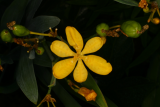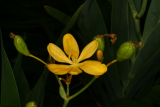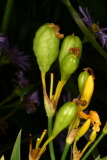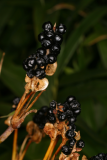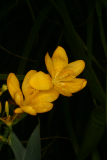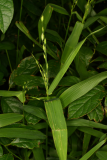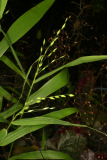Additional notes (click to expand)
Medicinal
In Traditional Chinese Medicine the root of the leopard lily has been used as an antipyretic, expectorant, purgative, and stomachic. Externally, it has been used for boils, cancer, contusions and swellings. It has been used to treat rheumatism, goitre, dysmenorrhea and constipation. The rhizome has been used for asthma, breast cancer, dropsy, dysuria, gonorrhoea, hepatitis, laryngitis, malaria, splenomegaly, stomach ache and tonsillitis.
Duke, James A., Ayensu, Edward S. (1985). Medicinal Plants of China - two volumes. Reference Publications Inc. Michigan, USA p.363
Nomenclature
Previously Belamcanda chinensis
Geographical distribution
- Asia-Temperate, China
- Asia-Temperate, Eastern Asia, Japan
- Asia-Temperate, Eastern Asia, Korea
- Asia-Temperate, Eastern Asia, Taiwan
- Asia-Temperate, Russian Far East, Primorye
Iris domestica (L.) Goldblatt & Mabb.
Family: IRIDACEAEGenus: Iris
Species: domestica (L.) Goldblatt & Mabb.
Common names: Blackberry Lily; Leopard Lily
Distribution summary: China, Japan, Korea, Taiwan
Habit: Perennial
Habitat: Sunny, dry, rocky hills
Garden status: Currently grown
Garden location: Far East (L)
Reason for growing: Medicinal
